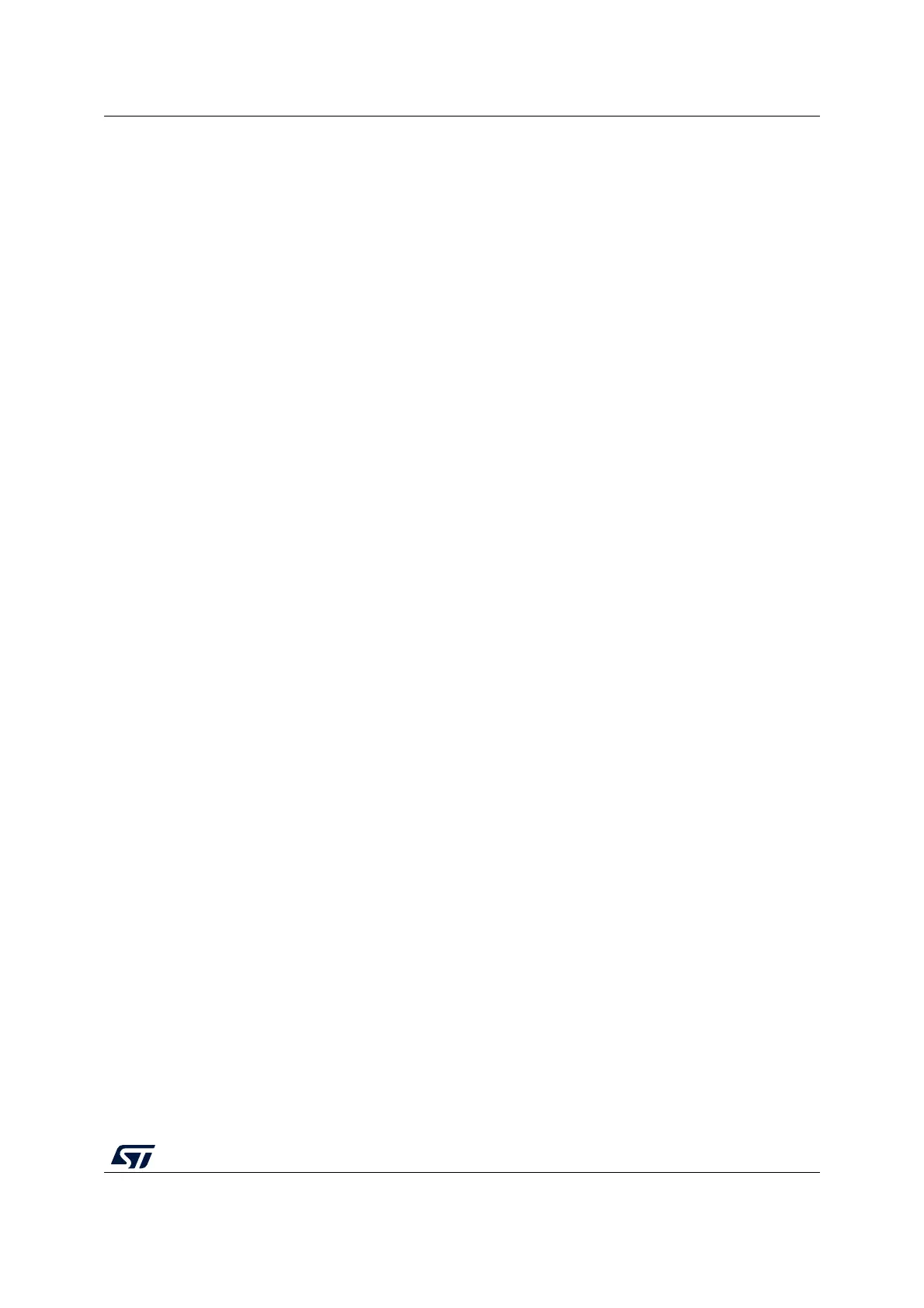RM0367 Rev 7 855/1043
RM0367 Low-power universal asynchronous receiver transmitter (LPUART)
872
Using Mute mode with Stop mode
If the LPUART is put into Mute mode before entering Stop mode:
• Wakeup from Mute mode on idle detection must not be used, because idle detection
cannot work in Stop mode.
• If the wakeup from Mute mode on address match is used, then the source of wake-up
from Stop mode must also be the address match. If the RXNE flag is set when entering
the Stop mode, the interface will remain in mute mode upon address match and wake
up from Stop.
• If the LPUART is configured to wake up the MCU from Stop mode on START bit
detection, the WUF flag is set, but the RXNE flag is not set.
Determining the maximum LPUART baud rate allowing to wakeup correctly
from Stop mode when the LPUART clock source is the HSI clock
The maximum baud rate allowing to wakeup correctly from Stop mode depends on:
• the parameter t
WULPUART
(wakeup time from Stop mode) provided in the device
datasheet
• the LPUART receiver tolerance provided in the Section 30.4.5: Tolerance of the
LPUART receiver to clock deviation.
Let us take this example: M bits = 01, 2 stop bits, BRR ≥
4096.
In these conditions, according to Table 151: Tolerance of the LPUART receiver, the
LPUART receiver tolerance is 4.42 %.
DTRA + DQUANT + DREC + DTCL + DWU < LPUART receiver tolerance
DWU max = t
WULPUART
/ (11 x Tbit Min)
Tbit Min = t
WULPUART
/ (11 x DWU max)
If we consider an ideal case where the parameters DTRA, DQUANT, DREC and DTCL are
at 0%, the DWU max is 4.42 %. In reality, we need to consider at least the HSI inaccuracy.
Let us consider the HSI inaccuracy = 1 %, t
WULPUART
= 8.1 μs (in case of Stop mode with
main regulator in Run mode, Range 1 ):
DWU max = 4.42 % - 1 % = 3.42 %
Tbit min = 8.1 µs / (11 ₓ 3.42 %) = 2.5 μs.
In these conditions, the maximum baud rate allowing to wakeup correctly from Stop mode is
1/ 21.5 μs = 46 kbaud.

